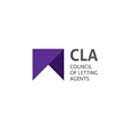I want to raise this matter because it recently happened to us in quite an expensive way and incorporated in this specific case are some of the generalities around this issue that I wish to highlight.
In general the guidance from Shelter, Citizens Advice and others run along the lines of; “if the infestation is due to disrepair (or was pre existing) then it’s the landlords problem and if its caused by something the tenant has or hasn’t done e.g. not disposing of food waste, then it’s the tenants cost”. Obviously this will also be impacted by the specific contents of the Tenancy Agreement.
In this instance we had a long-standing tenant (and a reasonably good one) who towards the end of their tenancy experienced a cockroach infestation. There was no history of infestations in that flat or indeed in the block. The routine inspections indicated that the property (including the kitchen), was of an acceptably clean standard, no evidence of waste food etc being left lying around or other issues that can lead to infestations of this type.
However, we did have reason to believe that the tenant had been importing boxes of fresh foodstuffs from abroad, not an issue in or of itself.
When the tenant reported the issue we immediately arranged for a specialist contractor to inspect the property. He confirmed it was cockroaches and treated it accordingly. Experts will tell you cockroaches can be difficult to eradicate and there was a subsequent re occurrence of the problem a short time later.
The tenant was informed at the time (though this was disputed), that we would be holding them liable for the cost of the treatment as our information was that the imported food products where the “probable” source of the infection. Again the tenant disputed this.
When they vacated we went through our usual, thorough check out procedure, comparing the property to the independently completed inventory, check our report, allowing for fair wear and tear etc. There were some minor deductions, however by far the biggest was the claim for the treatments of the infestation, which was over £400.
As you would expect the tenant contested this asserted that the infestation was an “act of God”. Despite much negotiation the only way forward was to use the Dispute Resolution of Safe Deposits. For those who are unfamiliar with this it involves the agent (or landlord) providing any evidence they have to defend their claim, tenancy documentation, inventories, invoices, inspection reports, statements from contractors etc. Similarly the tenant does the same and explains why they don’t think the issue is of their making. After due consideration the adjudicator gives their decision and normally the matter is concluded. Obviously a “good” agent would deal with the process for you.
In this case and much to my surprise the adjudicator found against us and didn’t award anything to the landlord, I was expecting at the very least a partial finding in our favor.
Generally there isn’t normally an option for an appeal unless you have something pretty radical in the way of new evidence. However having read the adjudication I felt that it didn’t give due wait to the report from the contractor detailing the probable source of the infestation or some of the other evidence. So I instructed my check out staff to put those points directly to the TDS and ask them to have another look; to be honest I wasn’t confident of any change in position but felt very strongly that this needed challenging.
After we had raised our concerns the TDS re considered their position and after re reflecting on all the evidence the original decision was reversed and they found in the landlords favor for the full amount.
To say we were happy for our landlord and surprised at the result is an understatement.
Now the point of this is not to say how fantastic my staff and processes are (though I think they are), but to highlight the things that help you get a result like this, whether you’re an agent or a landlord.
For me the key points that you MUST do in order to minimise the chance of this happening, but also to maximise the likelihood of a positive out come if should does occur are:
- Inventory – Preferably independently compiled, but more importantly done to a professional standard. You cant have too much information or too many photographs that show all areas of the property, the camera never lies.
- Inspections – Carried out regularly (how often will vary with the tenant/property), issues followed up, fully documented and with photographs.
- Contractor quotes/invoices – Properly done that detail the issue and possible causes where necessary, not scribbled on scrap bits of paper. Professional, detailed and on headed paper.
- Check Out Inspection – Thorough, well documented, photographed check out inspection.
- General – Copies of any relevant documentation, e.g. tenancy agreements obviously, but also emails to/from tenants and contractors, any other supporting documentation etc. We even record telephone calls.
The bottom line is that preparation and documentation from the beginning of the tenancy to its conclusion is the key. Good processes make for good outcomes for all the parties concerned, landlords, agents and tenants.








